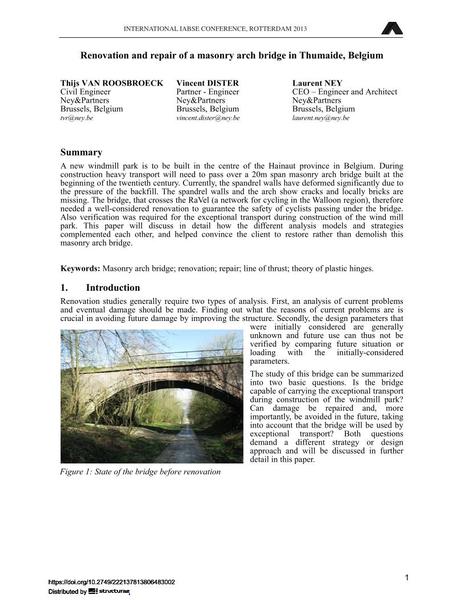Renovation and repair of a masonry arch bridge in Thumaide, Belgium

|
|
|||||||||||
Bibliographic Details
| Author(s): |
Thijs van Roosbroeck
Vincent Dister Laurent Ney |
||||
|---|---|---|---|---|---|
| Medium: | conference paper | ||||
| Language(s): | English | ||||
| Conference: | IABSE Conference: Assessment, Upgrading and Refurbishment of Infrastructures, Rotterdam, The Netherlands, 6-8 May 2013 | ||||
| Published in: | IABSE Conference, Rotterdam, May 2013 | ||||
|
|||||
| Page(s): | 190-191 | ||||
| Total no. of pages: | 5 | ||||
| Year: | 2013 | ||||
| DOI: | 10.2749/222137813806483002 | ||||
| Abstract: |
A new windmill park is to be built in the centre of the Hainaut province in Belgium. During construction heavy transport will need to pass over a 20m span masonry arch bridge built at the beginning of the twentieth century. Currently, the spandrel walls have deformed significantly due to the pressure of the backfill. The spandrel walls and the arch show cracks and locally bricks are missing. The bridge, that crosses the RaVel (a network for cycling in the Walloon region), therefore needed a well-considered renovation to guarantee the safety of cyclists passing under the bridge. Also verification was required for the exceptional transport during construction of the wind mill park. This paper will discuss in detail how the different analysis models and strategies complemented each other, and helped convince the client to restore rather than demolish this masonry arch bridge. |
||||
| Keywords: |
renovation repair masonry arch bridge line of thrust theory of plastic hinges
|
||||
